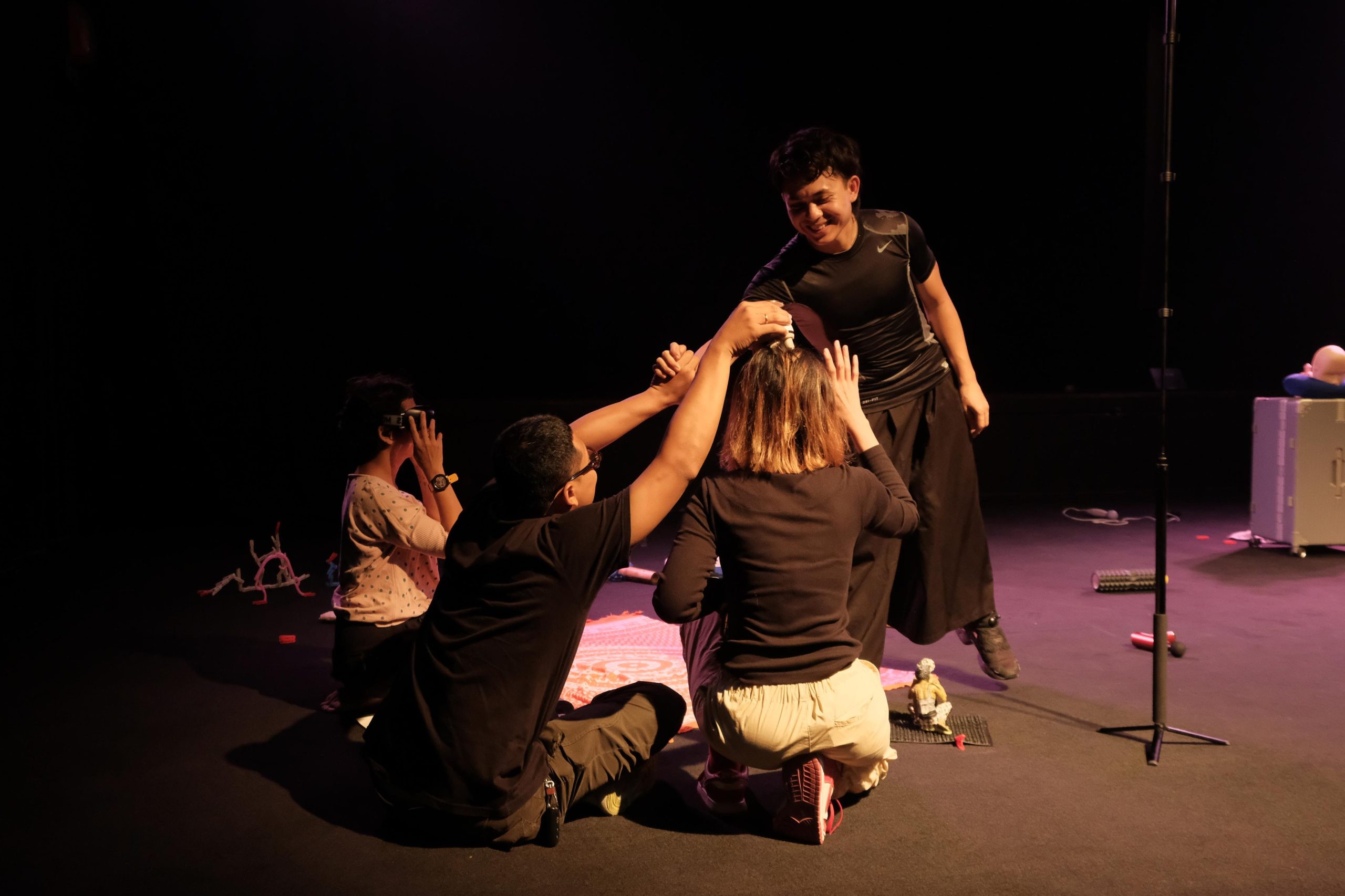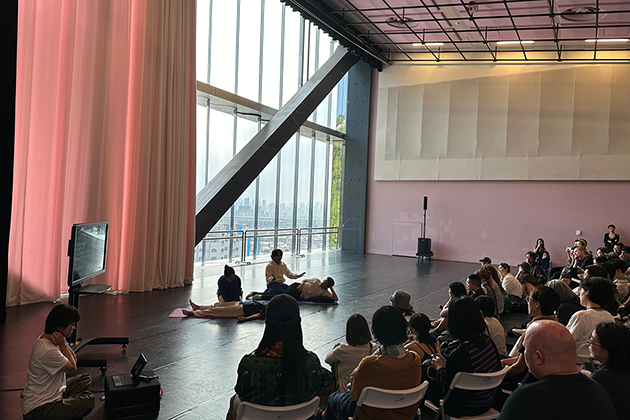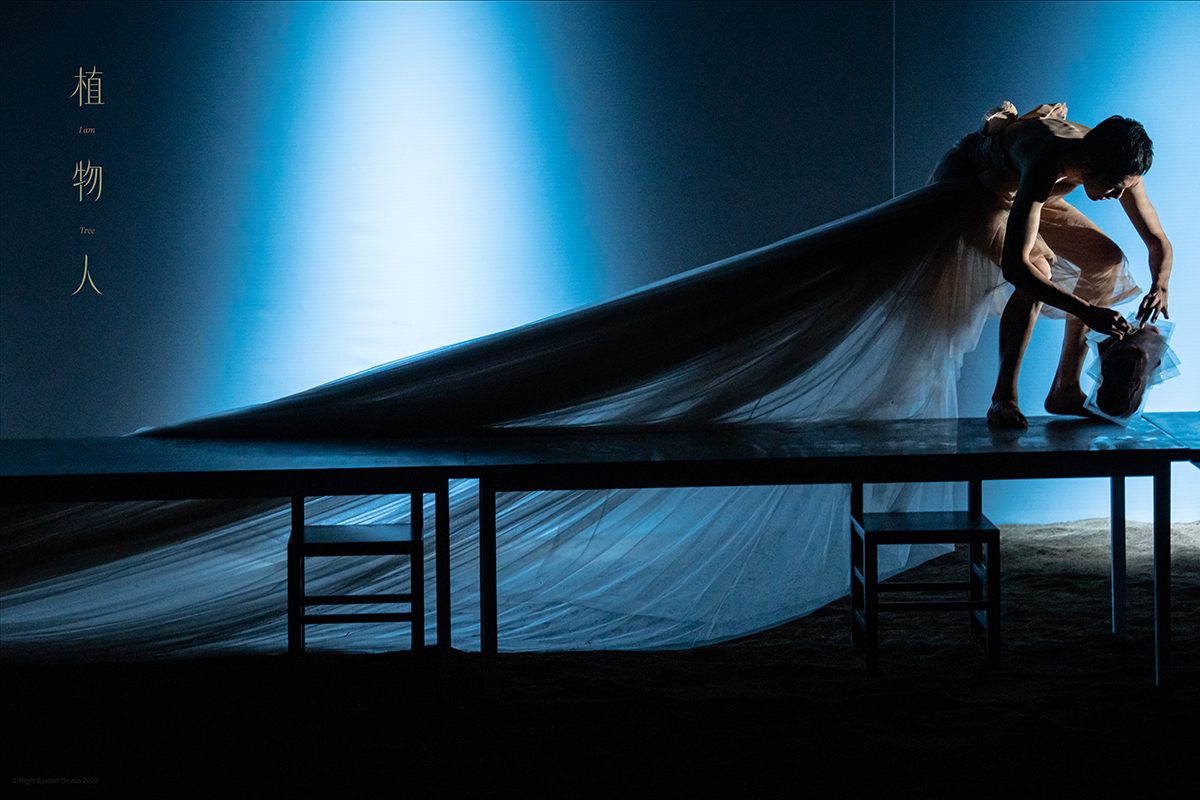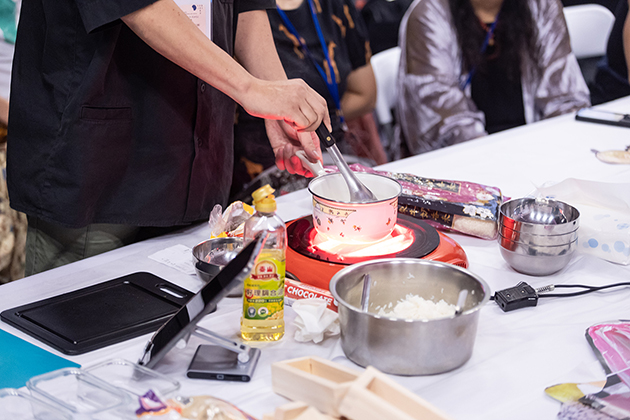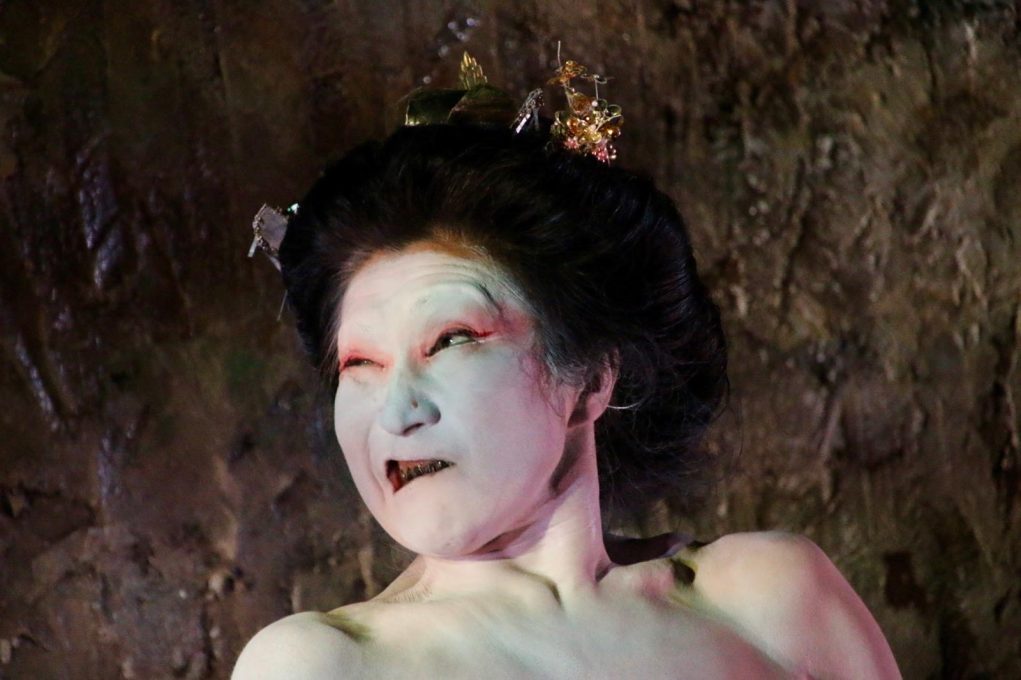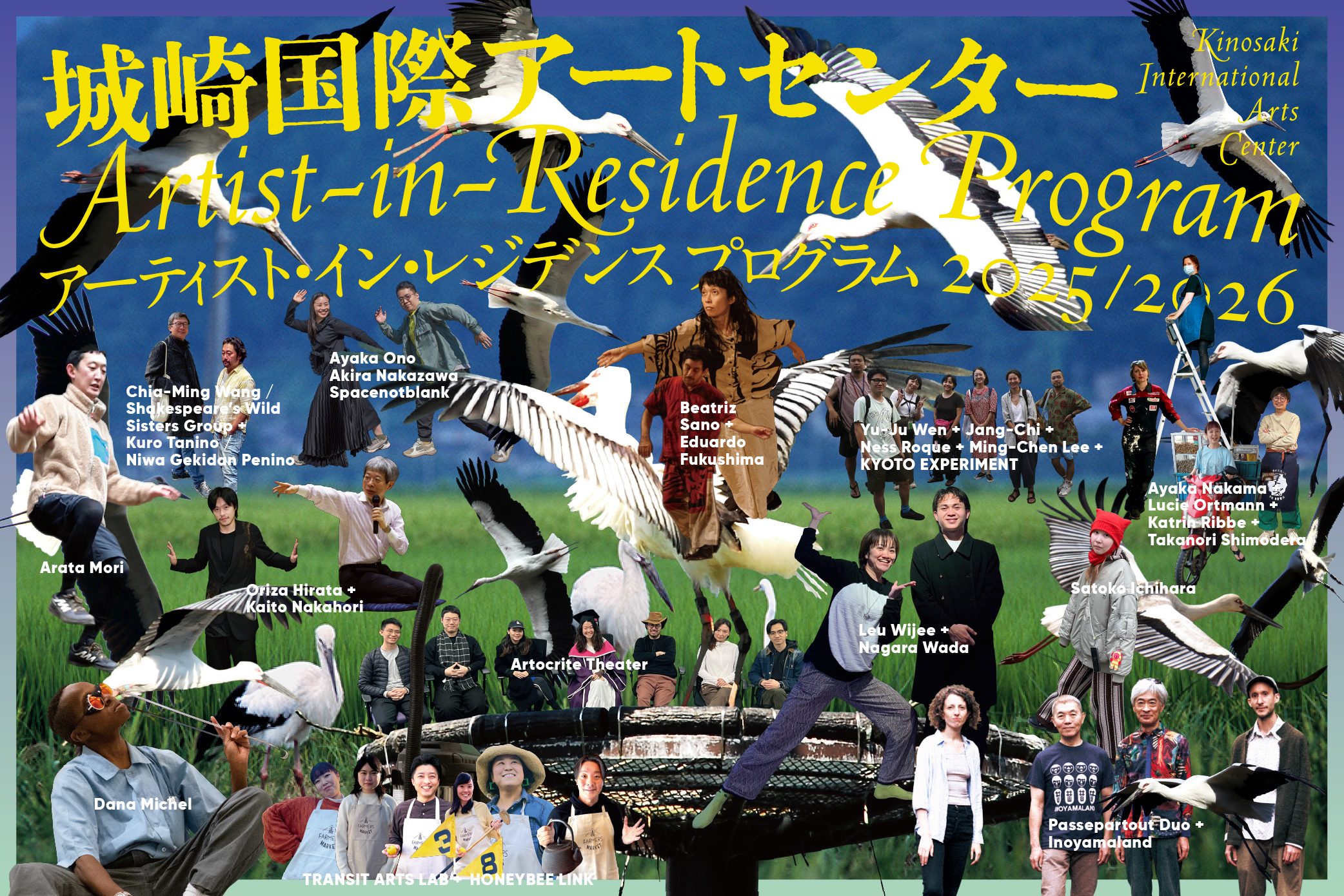ARTICLES

©Madoka Nishiyama
About the Artist in Residence Program for the fiscal year 2022/23
Kinosaki International Arts Center
2022.1.23
The call for the Artist in Residence Program for the fiscal year 2022/23 was open from May 1st to June 20th in 2021, and 63 applications from 17 countries were received. The meeting of the selection committee was held in July; and after interviewing and coordinating the schedules of artists, 11 projects were selected. Accompanied by the message from the Artistic Director, the overall selection process and the motivation for the each selected project are illustrated below.
[Message from the Artistic Director]
The arts have the power to make each audience reframe their own self at that point and the image of the society, by presenting the covert issues or the still unnoticed values to the audience. When the existing values get wavered, the audience may find “unpleasure”. However, the power of the arts may exist for connoting “unpleasure”. Today, with an increasing tendency towards the elimination of “unpleasure”, I seek for the means to present the power of the arts and the ways to associate myself with society while I create my works.
“Response to the society” and “critical creativity” were the principal concerns of the selection committee; and we placed these measures at the center of the selection. I look forward to observing what kind of residencies will be held at KIAC and witnessing the reactions of the people who will share a part of the artistic work during these residencies.
Satoko Ichihara
Artistic Director of Kinosaki International Arts Center
Playwright, Director and Novelist
[General information on the selection]
Characteristics of the applications
- Presumably because of the uncertainty over the future, applications from companies with a larger number of members were fewer than previous years. Instead, the number of projects at a relatively smaller scale, such as research and workshop projects in smaller groups or creation by individual artists.
- The number of applications was 63 for the season 2022/23. Compared to 80 applications for the season 2020/21 and 71 applications for the season 2021/22, the total number of applications has decreased because of fewer applications from abroad. In fact, the number of applications from Japanese artists remained normal.
Selection Committee
Three previous members Mikiya Taguchi (From April 2015 to March 2020: Director), Oriza Hirata (From April 2014 to March 2015: Advisor - From April 2015 to March 2021: Artistic Director) and Norikazu Sato (From April 2014 to March 2020: Advisor) have resigned, and four new members have been appointed. Four new members Reiko Shiga (Director from April 2021), Satoko Ichihara (Artistic Director from April 2021), Maki Hashimoto (KIAC Community Collaboration Director) and Kazuki Fujita (Dancer and researcher of contemporary dance) and three remaining members Chieko Kinoshita (Art Producer), Chiaki Soma (Representative Director, NPO Arts Commons Tokyo) and Yuichiro Yoshida (KIAC Program Director) have participated in the selection meeting.
Selection Committee of the Season 2022/23 Artist-in-Residence Program
Satoko Ichihara (Artistic Director of Kinosaki International Arts Center, Playwright, Director, Novelist and Director of Q)
Chiaki Soma (Representative Director - NPO Arts Commons Tokyo, General Producer - Toyooka Theater Festival)
Chieko Kinoshita (Art Producer, Associate Professor at 21st Century Kaitokudo, Osaka University)
Kazuki Fujita (Dancer, Researcher of contemporary dance)
Reiko Shiga (Director - Kinosaki International Arts Center)
Yuichiro Yoshida (Program Director - Kinosaki International Arts Center)
Maki Hashimoto (Community Collaboration Director - Kinosaki International Arts Center)
Criteria for selection
For its eighth year since the inauguration, in April 2021 KIAC had some changes in personnel of direction. Since then, the Artistic Director, Selection Committee and staff at KIAC have been exchanging ideas on the mission and vision of the KIAC. Consequently, two new criteria are set for the selection. Artists and projects which commit to respond critically to the surrounding issues of the society and to interest themselves in respect of history will be valued and supported.
Criteria for selection
[Response to the society] What kind of response is present in their arts in terms of current social and environmental issues?
[Critical creativity] In their arts, do they have the potential to update the existing values and what is considered as common sense?
Process for defining the program 2022/23
During the meeting, the selection committee had a series of discussions concerning the artists and projects which may fulfill the requirements according to the criteria mentioned above, in order to select the possible candidates for the program. For the final selection, the equilibrium in terms of genres, gender, places of interest and context itself as a whole program and the schedule of residencies were particularly taken into consideration. Then, the schedule was finalized, integrating the postponed programs from the fiscal 2021/22 due to Covid–19, KIAC productions and co-operation programs as well. At the end, 11 artists and projects were selected for the program 2022/23.
[About the selected projects]
Artist based in France and Japan, Yuni Hong Charpe will lead a research project on Choi Seung-hee, a dancer from Korea under Japanese rule, and create a lecture-performance and workshop with foreigners living in Toyooka and its surrounding areas.
Korean artist collective Creative VaQi will conduct research on the historical “Jeju April 3 incident”, an incident that happened in 1948, during the period Korea was undergoing the division between the North and the South. They will reconstruct an untold story from the voices of the victims of the incident and their bereaved families.
Their artistic creation beyond the existent form of the performing arts, on the complex and delicate social issues concerning the one’s identity, including the problems of foreign residents in Japan, or historical events occured in one’s own country, may lead us to a keen insight for the more inclusive social structure and social system.
A film director and actor Shingo Ota and his collaborators will research the vanishing geisha culture in Kinosaki to create a performance to examine issues like hierarchies at the working environment and sex and gender identity. They already had lessons with an ex-geisha in Kinosaki onsen; and in addition to the creation of a performance, they plan to open a bar in onsen street.
Artist Tomoko Sato will create a lecture-performance through the research centered on storks, which were once extinct but resurged after being protected. The performance will consist of the stories invented by humans and those from the perspective of non-humans. She also has a long term vision of creating more lecture-performances as a starting point to search for the possibilities of opening a free school in Toyooka.
On top of their high research and organization skill, their long-term vision for their own artistic growth in relation with the local resource in Toyooka as well as the possible growth of the projects themselves were positively acknowledged.
As a Japanese theater project, Ryo Ikeda with the company yumei is selected for the recreation of existing work which dealt with the relationships among Ikeda, his father and his grandfather, and the paintings of his grandfather and the painter Kazusue Ikeda. The unique technique to bring out an universal story from the author’s personal experiences by interweaving reality and fiction showed signs of the pursuit to open a new horizon for the theater.
Among the Japanese dance projects, the proposal of Ayane Nakagawa for Suichu-Megane∞, which raises questions on the creation environment of dance performances, stood out for its originality. The fact that not only one company but three dance groups of the same generation would collaborate to create a new work made their motivation to empower themselves very clear.
A French-based artist Kidows Kim will create a solo performance with the theme of transformation of the body, inspired by the cult film “Tetsuo: The Iron Man” directed by Shinya Tsukamoto in 1989. The singularity of his proposal had standed out among the other projects. His performance explores an almost eccentric but uncommon language of expression with the strangely mutating body accompanied by the use of moaning and costume, and it urged the decision to introduce his work in the Japanese performing arts scene.
Since 2017, Takuya Takemoto has been presenting every day a “performance” entirely constructed by subtle movements without too much concern about the presence of the public. At this residency, he aims to verbalize his own method which is emerging after five years of practice. Not only giving a value to the singularity of his artistic activity, through his daily “performances” in Kinosaki, Toyooka, KIAC expects to search for a new value of the art center itself.
A performance duo based in Argentine, Marina Sarmiento and Elisa Gagliano will conduct their research and experimentation on the idea they conceived during the lockdown period for Covid-19. They will organize multidisciplinary activities and fieldwork in and out of Toyooka to meet different cultures.
Both projects proposed an alternative approach for the use of the Artist-in-residence, different from the typical format used in the performing arts, “from creation to presentation”, but as a place to spend their lives.
French-based François-Xavier Rouyer and Kyoko Takenaka will work with local participants in two periods of residency, in order to create an experimental form of theater, in which the audience become the performer and tell the stories. After the residency, they will continue the creation and performances in various places in Japan and France.
Another group of two artists based in France, Delphine Lanson and Chiharu Mamiya will prepare a Japanese version of their participatory performance for young audiences premiered in 2021 in France, through the workshop and exchange with the children in Toyooka before the tour in Japan.
The originality of the project and the artistic work and the potential for the following development were valued for these projects. In addition, as a residency project, the involvement of the local citizens in the process of the creation should bring positive ripple effects in the city.
As stated above, these are 11 selected artists and projects for the program 2022/23.
[Other collaborative programs]
Other than the selected programs, following projects are programmed during the 2022/23 season.
KIAC Production:
- New creation to be premiered in 2023 by the Artistic Director Satoko Ichihara / Q
- Research projects on the local cultural resources such as San’in Kaigan UNESCO Global Geopark and folk performing arts in the Tajima Region.
Postponed programs:Programs postponed from the season 2021/22 due to Covid-19
- Residential program by Creative Music Festival
- Collaboration project by Wu-kang Chen and Ruey Horng Sun
- New creation by Shintaro Hirahara / OrganWorks
Co-operation programs: programs organized in partnership with artistic organizations in Japan and abroad
- Program of “Toyooka Theater Festival”, held in the city of Toyooka and its surroundings
- Cooperation with the International Performing Arts Festival in Kyoto “KYOTO EXPERIMENT”
- Cooperation with the contemporary dance festival “Yokohama Dance Collection”
- Cooperation with European network for young choreographers “AEROWAVES”
- Cooperation with Italian artists mobility support program “Crossing the sea”
[Operation Management]
As an art center for performing arts operated by the City of Toyooka, KIAC has the following two missions:
Supporting Japanese and international performing artists by providing the residency to promote quality creation
Serving as intermediate among artists, local citizens and resources, and between the arts sector and other sectors to bring forth further developments of arts and cultural activities as well as economic activities in Toyooka and Tajima region
KIAC will commit to organize and realize projects in line with these missions.
New position : Community Collaboration Director
In October 2021, a newly established position “Community Collaboration Director” was assigned for the purpose of promoting encounters and supporting collaborations among artists, local citizens and communities in Toyooka and Tajima region. Director, Artistic Director, Program Director, Community Collaboration Director, coordinator, technical staff and administration staff will collaborate closely with each other to achieve the mission of KIAC.
Networking with other artistic or relevant institutions in Japan and abroad
KIAC is eager to broaden its network with other artistic or relevant institutions and associations in Japan and abroad, such as San’in Kaigan UNESCO Global Geopark and Tourism Associations. As a part of the annual program, they will offer internship opportunities to the students of Professional College of Arts and Tourism inaugurated last April and cooperate with Toyooka Theater Festival.
Responses to Covid-19
Under the Covid-19 restrictions with the limited mobility of the artists from the different regions and countries, many “Artist-in-residence” facilities are encountering difficulties. Since the season 2020/21, despite the restrictions and many changes in consequence, KIAC has continued its programs by implementing the safety management measures for Covid-19 and by organizing events and experimenting the process of creation with the use of the internet. Still in the fiscal year 2022/23, the program may have some changes due to Covid-19, but KIAC shall nevertheless act accordingly to the circumstances in close contact with the City of Toyooka.
Season 2022/23 - The second year for the new team
The ongoing Covid-19 situation may still require us to take difficult decisions. For that reason, all the direction and management team of KIAC will continuously ask themselves the two criteria they posed for the selection process: “Response to the society” and “Critical creativity”. Not only the artists but we will also respond flexibly to what is demanded by the society by paying close attention to what is happening.
January 28, 2022
Kinosaki International Arts Center
The arts have the power to make each audience reframe their own self at that point and the image of the society, by presenting the covert issues or the still unnoticed values to the audience. When the existing values get wavered, the audience may find “unpleasure”. However, the power of the arts may exist for connoting “unpleasure”. Today, with an increasing tendency towards the elimination of “unpleasure”, I seek for the means to present the power of the arts and the ways to associate myself with society while I create my works.
“Response to the society” and “critical creativity” were the principal concerns of the selection committee; and we placed these measures at the center of the selection. I look forward to observing what kind of residencies will be held at KIAC and witnessing the reactions of the people who will share a part of the artistic work during these residencies.
Satoko Ichihara
Artistic Director of Kinosaki International Arts Center
Playwright, Director and Novelist
[General information on the selection]
Characteristics of the applications
- Presumably because of the uncertainty over the future, applications from companies with a larger number of members were fewer than previous years. Instead, the number of projects at a relatively smaller scale, such as research and workshop projects in smaller groups or creation by individual artists.
- The number of applications was 63 for the season 2022/23. Compared to 80 applications for the season 2020/21 and 71 applications for the season 2021/22, the total number of applications has decreased because of fewer applications from abroad. In fact, the number of applications from Japanese artists remained normal.
Selection Committee
Three previous members Mikiya Taguchi (From April 2015 to March 2020: Director), Oriza Hirata (From April 2014 to March 2015: Advisor - From April 2015 to March 2021: Artistic Director) and Norikazu Sato (From April 2014 to March 2020: Advisor) have resigned, and four new members have been appointed. Four new members Reiko Shiga (Director from April 2021), Satoko Ichihara (Artistic Director from April 2021), Maki Hashimoto (KIAC Community Collaboration Director) and Kazuki Fujita (Dancer and researcher of contemporary dance) and three remaining members Chieko Kinoshita (Art Producer), Chiaki Soma (Representative Director, NPO Arts Commons Tokyo) and Yuichiro Yoshida (KIAC Program Director) have participated in the selection meeting.
Selection Committee of the Season 2022/23 Artist-in-Residence Program
Satoko Ichihara (Artistic Director of Kinosaki International Arts Center, Playwright, Director, Novelist and Director of Q)
Chiaki Soma (Representative Director - NPO Arts Commons Tokyo, General Producer - Toyooka Theater Festival)
Chieko Kinoshita (Art Producer, Associate Professor at 21st Century Kaitokudo, Osaka University)
Kazuki Fujita (Dancer, Researcher of contemporary dance)
Reiko Shiga (Director - Kinosaki International Arts Center)
Yuichiro Yoshida (Program Director - Kinosaki International Arts Center)
Maki Hashimoto (Community Collaboration Director - Kinosaki International Arts Center)
Criteria for selection
For its eighth year since the inauguration, in April 2021 KIAC had some changes in personnel of direction. Since then, the Artistic Director, Selection Committee and staff at KIAC have been exchanging ideas on the mission and vision of the KIAC. Consequently, two new criteria are set for the selection. Artists and projects which commit to respond critically to the surrounding issues of the society and to interest themselves in respect of history will be valued and supported.
Criteria for selection
[Response to the society] What kind of response is present in their arts in terms of current social and environmental issues?
[Critical creativity] In their arts, do they have the potential to update the existing values and what is considered as common sense?
Process for defining the program 2022/23
During the meeting, the selection committee had a series of discussions concerning the artists and projects which may fulfill the requirements according to the criteria mentioned above, in order to select the possible candidates for the program. For the final selection, the equilibrium in terms of genres, gender, places of interest and context itself as a whole program and the schedule of residencies were particularly taken into consideration. Then, the schedule was finalized, integrating the postponed programs from the fiscal 2021/22 due to Covid–19, KIAC productions and co-operation programs as well. At the end, 11 artists and projects were selected for the program 2022/23.
[About the selected projects]
Artist based in France and Japan, Yuni Hong Charpe will lead a research project on Choi Seung-hee, a dancer from Korea under Japanese rule, and create a lecture-performance and workshop with foreigners living in Toyooka and its surrounding areas.
Korean artist collective Creative VaQi will conduct research on the historical “Jeju April 3 incident”, an incident that happened in 1948, during the period Korea was undergoing the division between the North and the South. They will reconstruct an untold story from the voices of the victims of the incident and their bereaved families.
Their artistic creation beyond the existent form of the performing arts, on the complex and delicate social issues concerning the one’s identity, including the problems of foreign residents in Japan, or historical events occured in one’s own country, may lead us to a keen insight for the more inclusive social structure and social system.
A film director and actor Shingo Ota and his collaborators will research the vanishing geisha culture in Kinosaki to create a performance to examine issues like hierarchies at the working environment and sex and gender identity. They already had lessons with an ex-geisha in Kinosaki onsen; and in addition to the creation of a performance, they plan to open a bar in onsen street.
Artist Tomoko Sato will create a lecture-performance through the research centered on storks, which were once extinct but resurged after being protected. The performance will consist of the stories invented by humans and those from the perspective of non-humans. She also has a long term vision of creating more lecture-performances as a starting point to search for the possibilities of opening a free school in Toyooka.
On top of their high research and organization skill, their long-term vision for their own artistic growth in relation with the local resource in Toyooka as well as the possible growth of the projects themselves were positively acknowledged.
As a Japanese theater project, Ryo Ikeda with the company yumei is selected for the recreation of existing work which dealt with the relationships among Ikeda, his father and his grandfather, and the paintings of his grandfather and the painter Kazusue Ikeda. The unique technique to bring out an universal story from the author’s personal experiences by interweaving reality and fiction showed signs of the pursuit to open a new horizon for the theater.
Among the Japanese dance projects, the proposal of Ayane Nakagawa for Suichu-Megane∞, which raises questions on the creation environment of dance performances, stood out for its originality. The fact that not only one company but three dance groups of the same generation would collaborate to create a new work made their motivation to empower themselves very clear.
A French-based artist Kidows Kim will create a solo performance with the theme of transformation of the body, inspired by the cult film “Tetsuo: The Iron Man” directed by Shinya Tsukamoto in 1989. The singularity of his proposal had standed out among the other projects. His performance explores an almost eccentric but uncommon language of expression with the strangely mutating body accompanied by the use of moaning and costume, and it urged the decision to introduce his work in the Japanese performing arts scene.
Since 2017, Takuya Takemoto has been presenting every day a “performance” entirely constructed by subtle movements without too much concern about the presence of the public. At this residency, he aims to verbalize his own method which is emerging after five years of practice. Not only giving a value to the singularity of his artistic activity, through his daily “performances” in Kinosaki, Toyooka, KIAC expects to search for a new value of the art center itself.
A performance duo based in Argentine, Marina Sarmiento and Elisa Gagliano will conduct their research and experimentation on the idea they conceived during the lockdown period for Covid-19. They will organize multidisciplinary activities and fieldwork in and out of Toyooka to meet different cultures.
Both projects proposed an alternative approach for the use of the Artist-in-residence, different from the typical format used in the performing arts, “from creation to presentation”, but as a place to spend their lives.
French-based François-Xavier Rouyer and Kyoko Takenaka will work with local participants in two periods of residency, in order to create an experimental form of theater, in which the audience become the performer and tell the stories. After the residency, they will continue the creation and performances in various places in Japan and France.
Another group of two artists based in France, Delphine Lanson and Chiharu Mamiya will prepare a Japanese version of their participatory performance for young audiences premiered in 2021 in France, through the workshop and exchange with the children in Toyooka before the tour in Japan.
The originality of the project and the artistic work and the potential for the following development were valued for these projects. In addition, as a residency project, the involvement of the local citizens in the process of the creation should bring positive ripple effects in the city.
As stated above, these are 11 selected artists and projects for the program 2022/23.
[Other collaborative programs]
Other than the selected programs, following projects are programmed during the 2022/23 season.
KIAC Production:
- New creation to be premiered in 2023 by the Artistic Director Satoko Ichihara / Q
- Research projects on the local cultural resources such as San’in Kaigan UNESCO Global Geopark and folk performing arts in the Tajima Region.
Postponed programs:Programs postponed from the season 2021/22 due to Covid-19
- Residential program by Creative Music Festival
- Collaboration project by Wu-kang Chen and Ruey Horng Sun
- New creation by Shintaro Hirahara / OrganWorks
Co-operation programs: programs organized in partnership with artistic organizations in Japan and abroad
- Program of “Toyooka Theater Festival”, held in the city of Toyooka and its surroundings
- Cooperation with the International Performing Arts Festival in Kyoto “KYOTO EXPERIMENT”
- Cooperation with the contemporary dance festival “Yokohama Dance Collection”
- Cooperation with European network for young choreographers “AEROWAVES”
- Cooperation with Italian artists mobility support program “Crossing the sea”
[Operation Management]
As an art center for performing arts operated by the City of Toyooka, KIAC has the following two missions:
Supporting Japanese and international performing artists by providing the residency to promote quality creation
Serving as intermediate among artists, local citizens and resources, and between the arts sector and other sectors to bring forth further developments of arts and cultural activities as well as economic activities in Toyooka and Tajima region
KIAC will commit to organize and realize projects in line with these missions.
New position : Community Collaboration Director
In October 2021, a newly established position “Community Collaboration Director” was assigned for the purpose of promoting encounters and supporting collaborations among artists, local citizens and communities in Toyooka and Tajima region. Director, Artistic Director, Program Director, Community Collaboration Director, coordinator, technical staff and administration staff will collaborate closely with each other to achieve the mission of KIAC.
Networking with other artistic or relevant institutions in Japan and abroad
KIAC is eager to broaden its network with other artistic or relevant institutions and associations in Japan and abroad, such as San’in Kaigan UNESCO Global Geopark and Tourism Associations. As a part of the annual program, they will offer internship opportunities to the students of Professional College of Arts and Tourism inaugurated last April and cooperate with Toyooka Theater Festival.
Responses to Covid-19
Under the Covid-19 restrictions with the limited mobility of the artists from the different regions and countries, many “Artist-in-residence” facilities are encountering difficulties. Since the season 2020/21, despite the restrictions and many changes in consequence, KIAC has continued its programs by implementing the safety management measures for Covid-19 and by organizing events and experimenting the process of creation with the use of the internet. Still in the fiscal year 2022/23, the program may have some changes due to Covid-19, but KIAC shall nevertheless act accordingly to the circumstances in close contact with the City of Toyooka.
Season 2022/23 - The second year for the new team
The ongoing Covid-19 situation may still require us to take difficult decisions. For that reason, all the direction and management team of KIAC will continuously ask themselves the two criteria they posed for the selection process: “Response to the society” and “Critical creativity”. Not only the artists but we will also respond flexibly to what is demanded by the society by paying close attention to what is happening.
January 28, 2022
Kinosaki International Arts Center
